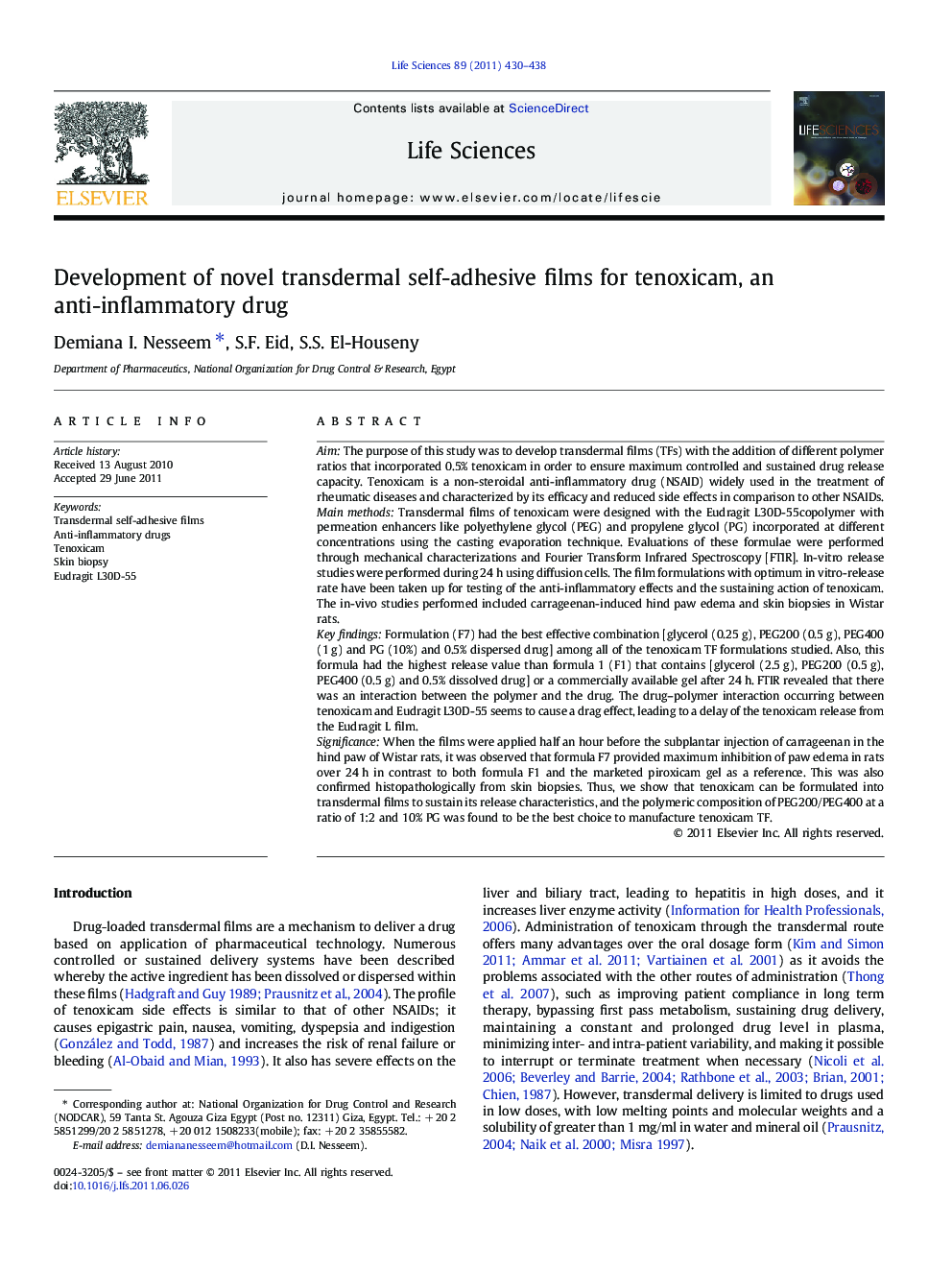| Article ID | Journal | Published Year | Pages | File Type |
|---|---|---|---|---|
| 2551776 | Life Sciences | 2011 | 9 Pages |
AimThe purpose of this study was to develop transdermal films (TFs) with the addition of different polymer ratios that incorporated 0.5% tenoxicam in order to ensure maximum controlled and sustained drug release capacity. Tenoxicam is a non-steroidal anti-inflammatory drug (NSAID) widely used in the treatment of rheumatic diseases and characterized by its efficacy and reduced side effects in comparison to other NSAIDs.Main methodsTransdermal films of tenoxicam were designed with the Eudragit L30D-55copolymer with permeation enhancers like polyethylene glycol (PEG) and propylene glycol (PG) incorporated at different concentrations using the casting evaporation technique. Evaluations of these formulae were performed through mechanical characterizations and Fourier Transform Infrared Spectroscopy [FTIR]. In-vitro release studies were performed during 24 h using diffusion cells. The film formulations with optimum in vitro-release rate have been taken up for testing of the anti-inflammatory effects and the sustaining action of tenoxicam. The in-vivo studies performed included carrageenan-induced hind paw edema and skin biopsies in Wistar rats.Key findingsFormulation (F7) had the best effective combination [glycerol (0.25 g), PEG200 (0.5 g), PEG400 (1 g) and PG (10%) and 0.5% dispersed drug] among all of the tenoxicam TF formulations studied. Also, this formula had the highest release value than formula 1 (F1) that contains [glycerol (2.5 g), PEG200 (0.5 g), PEG400 (0.5 g) and 0.5% dissolved drug] or a commercially available gel after 24 h. FTIR revealed that there was an interaction between the polymer and the drug. The drug–polymer interaction occurring between tenoxicam and Eudragit L30D-55 seems to cause a drag effect, leading to a delay of the tenoxicam release from the Eudragit L film.SignificanceWhen the films were applied half an hour before the subplantar injection of carrageenan in the hind paw of Wistar rats, it was observed that formula F7 provided maximum inhibition of paw edema in rats over 24 h in contrast to both formula F1 and the marketed piroxicam gel as a reference. This was also confirmed histopathologically from skin biopsies. Thus, we show that tenoxicam can be formulated into transdermal films to sustain its release characteristics, and the polymeric composition of PEG200/PEG400 at a ratio of 1:2 and 10% PG was found to be the best choice to manufacture tenoxicam TF.
